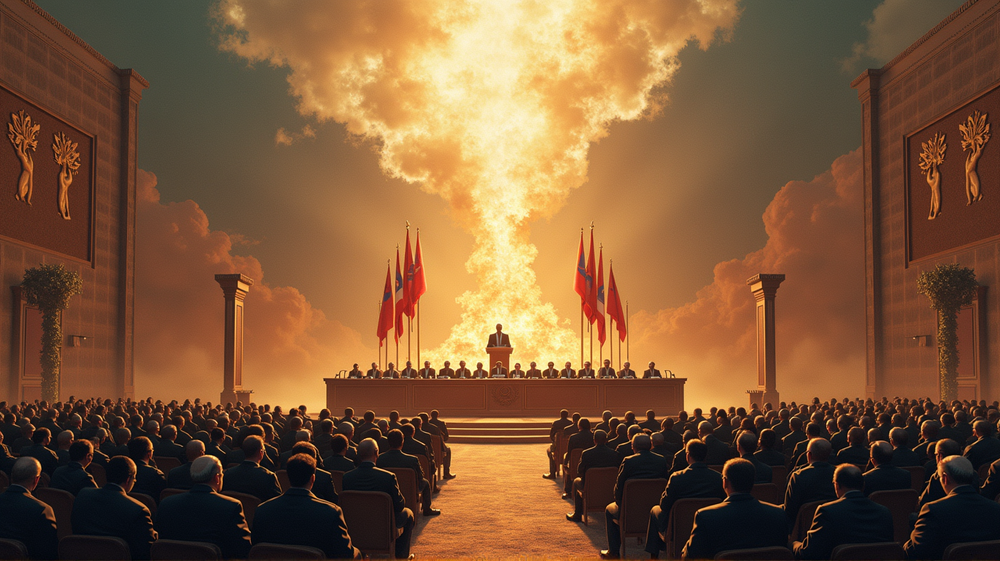As President Donald Trump stood resolute on the vibrant stage in Sharm el-Sheikh, Egypt, attempting to herald a new era of peace in the Middle East, the absence of crucial figures painted a remarkably different picture. His audacious 20-point peace plan looks ambitious on paper but seems fragile when faced with the stark reality of missing players — Israel, Saudi Arabia, and the United Arab Emirates. Their absence didn’t merely cast shadows but starkly illuminated the summit’s underlying fragility and the ambitious peace vision it sought to promote.
Missing Leaders, Missing Peace?
The staggering absence of Israeli Prime Minister Benjamin Netanyahu, Saudi Crown Prince Mohammed bin Salman, and UAE leader Mohamed bin Zayed rings alarm bells as their cooperation is paramount. Without their active involvement, the prospects for turning Trump’s plan into reality remain bleak. Their non-attendance draws attention to the complexities that continue to shroud Middle Eastern politics—a sobering reminder of the nuanced diplomacy required beyond grand declarations.
An Overlooked Summit
In an event designed to showcase political unity and forward movement, the absence of these keystone figures subtly highlighted a deep-seated discord. While the media brimmed over with stories of emotional family reunions as hostages returned home, the void left by these absent leaders spoke volumes. Benjamin Netanyahu, steadfast in his stance against a hasty ceasefire, alongside the strategic monetary backing of the Saudis and Emiratis, remains crucial for the reconstruction of Gaza. Yet, these nations sent representatives in their stead, indicating a lack of consensus that undermines the summit’s achievements.
Beyond Optics: The Plan’s Real Challenges
Trump’s declaration at the summit aimed to reverberate through history as a turning point in Middle Eastern peace. However, the grandiose claims came juxtaposed against a document—the “Trump Declaration for Enduring Peace and Prosperity”—filled with expansive but vague assurances. With essential details lacking, the true nature of the intended peace process remains opaque. Convincing Netanyahu to agree to a ceasefire is a notable feat, but achieving lasting peace demands more than photogenic ceremonies.
Vision Vs. Reality: A Reshaped Middle East
Legacy and ambition are perilous bedfellows. Trump’s spectacle of political camaraderie threatened to become overshadowed by absence and reality. Saudi participation, contingent on a revised peace framework inclusive of Palestinian input and hopes for statehood, remains pivotal yet tentative. The ambiguity of leadership roles within Gaza’s proposed governing body further compounds these uncertainties, painting a picture of a vision teetering on the brink of collapse.
The Path Ahead: Anchoring Ambitious Visions
President Trump’s significant achievement in orchestrating hostages’ release provides new momentum, yet substantial hurdles remain. His ambitious Middle Eastern vision—bright with hope and potential—necessitates embracing broader, inclusive dialogues. As subtle as it was strong, the message sent by absent leaders underscores the need for genuine collaboration if Trump’s dreams of a serene, prosperous Middle East are to materialize beyond the confines of rhetoric.
Turning Ambitiously Toward Reality
While Trump’s vision of a Gaza Riviera teeters on dreams of opulent peace, history and timely action remind us that such dreams depend profoundly on the collective commitment of all regional players. For now, the summit in Egypt serves as a potent reminder that bold ambitions must intertwine with reality to sow the seeds of enduring peace across the tumultuous Middle Eastern landscape.
According to The Mercury News, the robustness of Trump’s plan must navigate the intricate web of political intricacies, ensuring steps are conscious and aligned if peace is to flourish.












